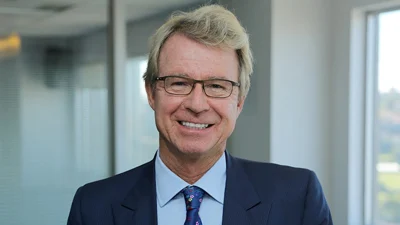Don’t overlook global mid caps: Fidelity



While underappreciated in the past, global mid cap equities present “superior” returns and valuable portfolio diversification.
Maroun Younes, co-portfolio manager for the Fidelity Global Future Leaders Fund, is encouraging investors seeking exposure to global equity markets to not disregard mid cap companies.
This part of the market has often flown under the radar, he said, with investors tending to prioritise large or small cap opportunities instead.
“Mid caps sit at what might be called the ‘sweet spot’ between large cap and small cap stocks. They can offer more growth than large caps, with less risk and volatility than small and micro caps.
“Indeed, if we look back over the past quarter of a century or so, global mid caps have generated higher returns than large caps,” Younes observed.
Adding valuable portfolio diversification is another key feature of mid caps, the co-portfolio manager explained.
“The global large cap investing universe is heavily influenced by a small number of mega cap names, many of them in the tech sector, who have driven performance of the market index for a number of years.”
These types of technology corporations have been categorised as MANAMA stocks, made up of Microsoft, Apple, Netflix, Alphabet, Meta and Amazon.
Younes continued: “The growth of these tech-related names has been so strong in recent years that they have made an outsize contribution to the performance of the world index overall.”
However, he argued that the performance of a small number of stocks which carry a significant proportion of the overall market performance is not sustainable long term.
“By contrast, the global mid cap universe of stocks is far more diverse at stock level with no single names, or groups of names, driving performance on the market.
“The mid cap universe is home to many potential ‘multi-baggers’ – companies that have the potential to grow many multiples of their current value,” Younes said.
Rather than focusing on a top-heavy market which poses large risks to the success of global large caps, mid caps instead offer more desirable investment characteristics through diverse opportunities.
Moreover, these types of stocks often see lower coverage compared to large caps, which present attractive opportunities by bottom-up research and active management.
“Fewer investors researching these names increases the likelihood of high-quality business flying under the radar, allowing for mispriced opportunities.”
He added: “Investors can also quite often ‘miss the forest for the trees’, not realising that there are well-established businesses with strong track records alongside the more obvious listings of newer companies and business models.”
With greater profitability and above-index performance over the medium and long term, Younes highlighted the diversifying exposure that global mid caps offer.
Recommended for you
BlackRock, in collaboration with iCapital and GeoWealth, has unveiled a model portfolio that delivers access to both private and public market assets in a single account, following adviser demand.
Magellan has confirmed the new leadership of its active infrastructure ETF once head of investment, Gerald Stack, exits in July.
Vanguard has indicated it is actively trying to meet the demand for international ETFs with its next ETF launches sitting in this space.
Dubious marketing strategies involving financial advisers are among reasons that research house SQM Research has put the private credit space on alert.















